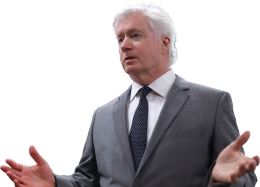Negligent entrustment is a legal concept that comes up in some car accident cases. It deals with the responsibility of a vehicle owner – not just the driver – when an accident happens.
Understanding Negligent Entrustment
Negligent entrustment means someone (like a car owner) gives their vehicle to another person who they know, or should know, is not safe to drive. Examples include:
- A car owner lends their car to a friend they know regularly drives drunk, and that friend causes a crash.
- A parent lets a teenager drive the family car after the teen lost their license for speeding.
- Someone gives their vehicle to a person with no driver’s license or to someone repeatedly involved in accidents.
If you were hit by a negligent driver in a car accident and believe the vehicle’s owner made a reckless choice, you and your lawyer might also have a negligent entrustment claim
How Is It Different From the Driver’s Negligence?
In most accident cases, liability focuses on the person who was driving badly and caused the crash. Negligent entrustment is a separate claim that targets the vehicle owner for making a poor and dangerous decision by handing over the keys. The law can hold both the drunk or reckless driver and the person who trusted them with the car accountable for injuries and damages that occur.
Your Case Will Get
The Attention It Deserves

How Do You Prove Negligent Entrustment?
Negligent entrustment cases allow injured people to hold car owners responsible when they allow an unsafe person to drive their vehicle. Winning this type of claim in a car accident case requires clear proof of several things. Here’s how negligent entrustment is proven:
The Owner Gave the Vehicle to the Driver
The first thing you have to show is that the vehicle’s owner actually let the driver take the car, either by lending, giving permission, handing over the keys, or allowing regular use. This goes beyond the driver just taking or using the car on their own without permission.
The Driver Was Unfit or Unsafe to Drive
There must be evidence that the driver wasn’t suited to be behind the wheel that day. They could be unlicensed, under the influence, chronically reckless, had a revoked license, a history of car accidents, or clear impairments that made driving hazardous.
The Owner Knew or Should Have Known About the Risk
It’s not enough for the driver to have a bad record – the owner must have actually known, or reasonably should have figured out, that their decision could lead to harm. Red flags like obvious intoxication, lack of a valid license, or visible erratic behavior show this. A court looks for warning signs the owner ignored.
The Unfit Driver Caused an Accident that Led to Harm
Last, you have to prove it was the dangerous driver at the wheel who ended up causing the crash and resulting injuries or damages.
Evidence Used to Prove These Elements
To prove this claim, strong evidence is needed to back up each legal element, usually including some or all of the following:
Proof of Vehicle Entrustment
Emails, text messages, car loan agreements, or even statements from witnesses can help prove that the vehicle owner knowingly allowed the unsafe driver to use the car on the day of the crash. Any evidence showing how and why the driver got access is important.
Driver’s History of Unsafe Behavior or Lack of Qualifications
Driving records showing a revoked or suspended license, a report of prior DUIs, citations for reckless driving, or recent car crashes all build a case that the driver was unfit. Medical or employment records may reveal other issues, such as medical impairments that make driving dangerous.
Owner’s Knowledge or Reason to Know of the Risk
Emails, texts, or spoken conversations may show that the owner was aware of previous problems. If the driver was visibly intoxicated, had already lost their license, or if family members warned the owner, these facts help demonstrate the owner’s awareness.
Evidence Linking the Unfit Driver to the Crash
Police accident reports, eyewitness statements, and crash reconstruction can offer clear proof that the unsafe driver was the one driving and directly caused the harm.
The more evidence you have, the easier it is to prove your claim and get the justice you deserve.


Damages You Can Recover in a Negligent Entrustment Case
If you can prove negligent entrustment in your car accident case, you may be eligible to recover different kinds of damages for the harm you’ve suffered. These damages are designed to help make you whole again, and in some cases, punish especially reckless behavior.
Economic Damages
These cover your measurable financial losses from the accident. They include medical bills, emergency care costs, rehabilitation, prescription expenses, lost income from missing work, and the cost of repairing or replacing your car or other property. Economic damages are usually calculated using bills, receipts, and other official reports.
Non-Economic Damages
Non-economic damages compensate you for the experiences that don’t come with a receipt, such as pain and suffering, mental anguish, loss of enjoyment of life, scarring, or loss of companionship from a loved one’s injuries. These damages can be significant but are harder to calculate.
Punitive Damages
In rare cases, if it can be shown that the car owner acted especially recklessly or with obvious disregard for the safety of others, punitive damages may be awarded. These aren’t meant to compensate you directly, but rather to punish the owner and discourage other people from the same dangerous conduct.
Damages can be difficult to calculate. The best way to make sure you get what you’re entitled to and don’t leave anything on the table is to reach out to a personal injury lawyer right away. Contact us today to schedule a free consultation.




